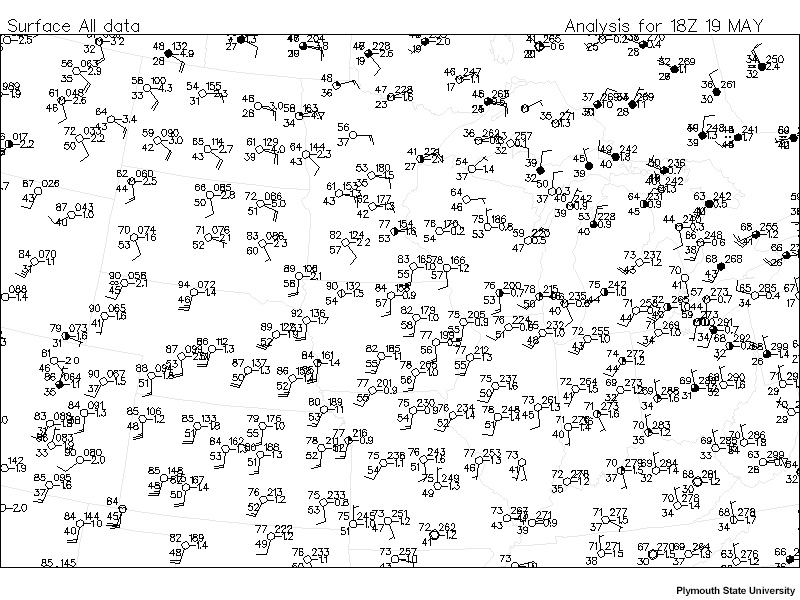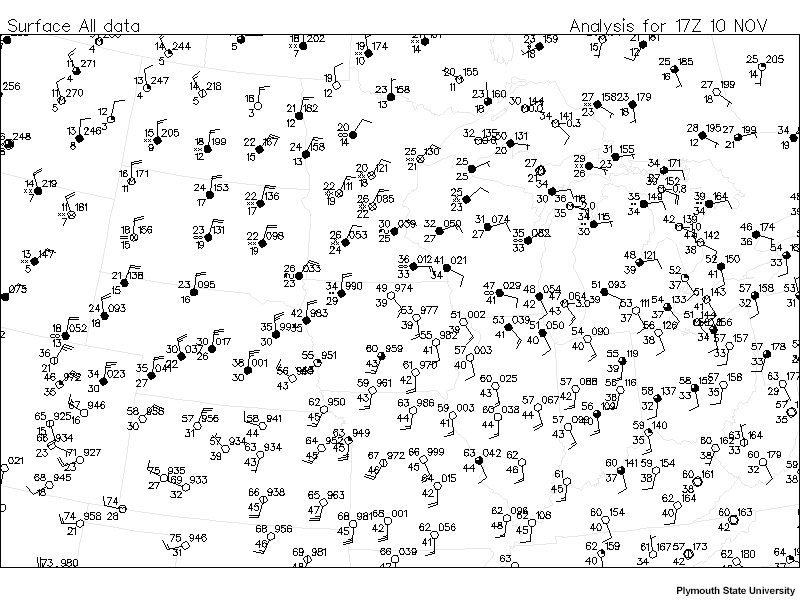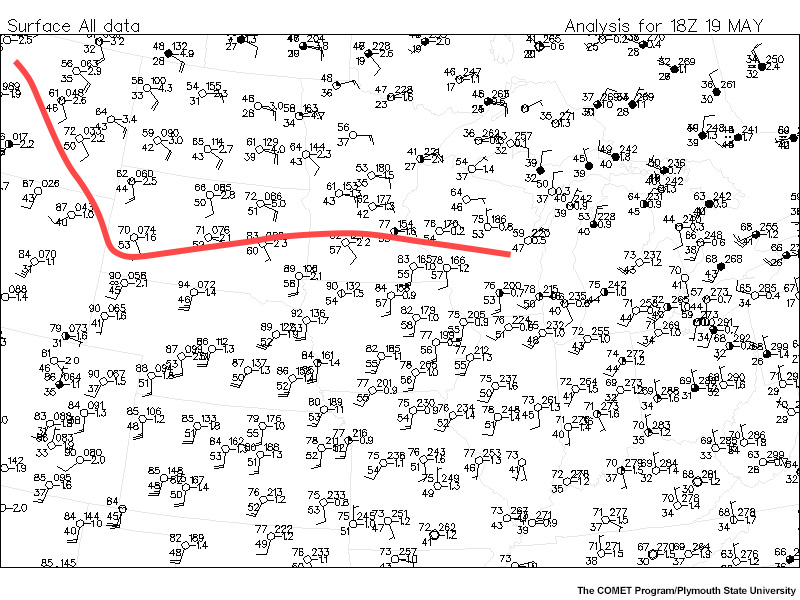Pre-Lab: Finding Fronts using Multiple Fields » Putting it All Together: Practice Examples with Station Observations » Warm Front
Example
Question 1 of 2
Determine the location of any surface fronts by drawing them in with the pen tool(s). Available colors correspond to the standard color schemes mentioned above.

| Tool: | Tool Size: | Color: |
|---|---|---|
A quick glance at pressures and winds overall tells us there must be a low pressure system centered off the page close to the northwest corner of the region. Given that information, and the very wide swaths of warm temperatures in the 80s with dewpoints in the 50s and southerly winds across the great plains, we can guess that a frontal boundary separates the northern edge from the cooler, less moist easterlies across the states bordering with Canada. The warm front runs roughly from the intersection of MT, WY and SD southeastward through southern SD, eastward and northeastward into the Minneapolis area, and then through central WI - further east than this the boundary may be stationary, given the more variable and lighter winds. We will cover situational awareness and determining frontal type via animations in a subsequent section of the pre-labs.
Example 2
Question 2 of 2
Determine the location of any surface fronts by drawing them in with the pen tool(s). Available colors correspond to the standard color schemes mentioned above.

| Tool: | Tool Size: | Color: |
|---|---|---|
Here we can see a developing low pressure system situated roughly over western Iowa. A cold, dry airmass lies to its west and just slightly south of west into northern Kansas. A warm, moist airmass with temperatures in the 60s and 50s and dewpoints in the mid-40s coming from the south stretches across much of Kansas, all of Missouri, nearly all of Illinois and into Indiana. The warm front denotes the boundary between this muggy air and the much cooler, modified dry air coming from primarily from the east that is draped across central and northern Wisconsin, central and northern Michigan and extending eastward north of Lake Erie and Lake Ontario.

